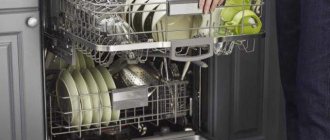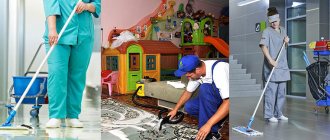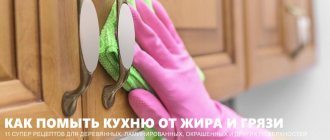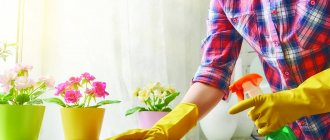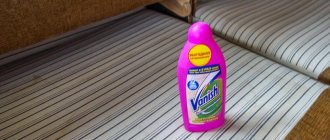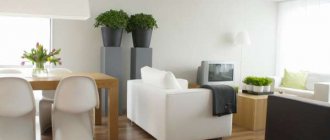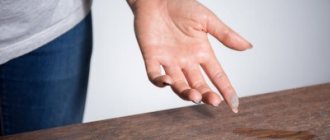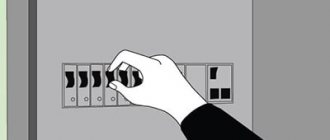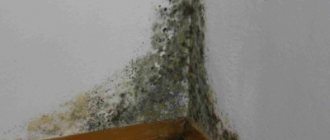Algorithm for carrying out current cleaning according to SanPiN
It is imperative to maintain cleanliness in the office throughout the day. Routine cleaning is carried out as a preventive measure, to prevent infections, to achieve the requirements adopted by the sanitary and hygienic regime. This will help get rid of harmful microorganisms and maintain the attractive appearance of the room.
Each room has its own schedule, special means, tools.
NECESSARY CLEANING EQUIPMENT FOR GENERAL CLEANING IN THE TREATMENT ROOM
To carry out regular general cleaning in the treatment room you will need:
- a freshly prepared disinfectant solution (part of it is poured into a spray bottle for convenient treatment of hard-to-reach places);
- two sets of overalls (sterile and non-sterile);
- three containers (for treating floors, walls and furniture);
- two mops (one each for walls and floor);
- napkins or rags for washing surfaces, applying disinfectant and wiping dry;
- container with disinfectant solution for used napkins and dirty work clothes.
Rules for routine cleaning
Cleaning must be carried out twice during the working day. It is also carried out before the start of the working day and after its completion.
If we are talking about a medical facility, then routine cleaning twice may not be enough. If it is possible to do it more than twice, you need to pay attention to this point.
Windows should be washed twice a year as planned, as we wrote about in a publication about ways to clean windows efficiently.
Every day, while cleaning the premises, you should pay attention to:
- Carefully remove all dirt from horizontal and vertical surfaces;
- Take care of plants, medical shelves;
- Dry cleaning furniture;
- Clean carpets if present;
- Take out the trash every day.
Putting things in order must comply with all the rules of sterility, so it is better to entrust the matter to professionals. Specially trained people will cope with the task much faster and with better quality.
Often, in the cleaning area, on the floor or walls, there are complex relief tiles; we wrote earlier how to clean them correctly in another publication.
Features of sanitization
The treatment room is cleaned by a nurse or orderly who is assigned to a specific room. She must have experience and knowledge, practice the basics of modern technologies for tidying and the requirements of the sanitary and epidemiological regime.
If a healthcare worker has not undergone training and special instructions, he is prohibited from being allowed to clean the treatment room. Before carrying out the treatment and after its completion, when performing routine tidying, it is necessary to disinfect the room (with quartz).
On a note! Quartzization devices are capable of destroying at least 95% of pathogenic microbes that float in the air.
The elimination of pathogenic microorganisms on the surfaces of furniture and medical equipment occurs by wiping them with a disinfectant or disinfectant solution. However, it must be remembered that agents that are harmful to microbacteria may not kill viral infections and vice versa. Therefore, to eliminate them it is necessary to use various disinfectants.
An antiviral regime should be provided in the medical office when some biomaterials of a sick patient have come into contact with objects located in the room. The first is blood. Since it may contain antibodies of viral hepatitis and HIV infection.
If there is no contamination with biomaterials, a standard antimicrobial regimen is carried out. Appropriate disinfectants are used for this. The cleaning procedure for the treatment room must be followed.
General cleaning is carried out in accordance with the schedule. It is performed in the absence of patients. The following equipment is sterilized the day before:
- rags;
- napkins;
- sponges.
The rags must be marked. At least 8 napkins are used. For:
- walls;
- furniture;
- refrigeration equipment;
- floor covering.
All cleaning products must be well dried (except for the brush, which is in a disinfectant solution). They must be located in a separate place and used exclusively for sanitizing the office for which they are intended. It is prohibited to use cleaning equipment marked “Toilet” to clean a hospital room. Stages of general cleaning of the treatment room:
- the first thing to do is move furniture away from the walls;
- then food and any waste are taken out of the room;
- wash the walls well, paying special attention to the switches;
- wash doors, door locks, handles;
- use a rag soaked in a disinfectant solution to wipe the lighting fixtures;
- flush radiators;
- furniture is wiped clean from dirt and dust.
At the end, wash the floors, starting from the far corner, thoroughly washing the surface around the perimeter and baseboards. Then the center of the room is washed. Sinks and baseboards are cleaned with detergent and a brush.
Requirements for equipment and household chemicals
The first thing you should pay attention to for routine cleaning is equipment and household chemicals. These are the main aspects that will help in bringing order to your office. When cleaning a medical facility, you must be prepared for the fact that you will encounter not only dust and small debris, but also sources of infection that can be dangerous to your health. This means that a standard damp sponge will not be sufficient for wiping. It is imperative to use professional preparations. People who carry out cleaning in medical institutions must undergo special training.
Types and purpose of general cleaning products
Disinfectants or soap products are available in the form of concentrates, tablets, and powders. Solutions can also be prepared independently from alcohol, chlorine, formaldehyde, hydrogen peroxide, soda ash, and laundry soap.
Table of products: Characteristics of disinfectants and detergents
| № | Drug name | Working solution concentration | Items processed | Consumption of the finished product |
| 1 | Lumax, liquid (Lumax) | 1% ─ 100 ml of the drug per 9900 ml of water; 2% ─ 200 ml per 9800 ml of water, etc. The acceptable range is from 0.5 to 4%. | Walls, ceiling, floor, hard furniture, instruments, apparatus, technical and sanitary equipment, medical products made of glass, metal, plastic, rubber, silicone, laboratory glassware, toys (except soft ones). | Doors, floors, furniture ─ 100 ml/m2; irrigation of walls and ceilings using a hydraulic remote control ─ 300 ml/m2; wiping the sink with a brush or brush ─ 150 ml/m2. |
| 2 | ERISAN OXY +, powder (ERISAN OXY +) | 1% ─ 100 gr. powder per 9900 ml of water. Concentration ─ from 0.25 to 5%. | See point No. 1. It is prohibited to process medical products made of brass and copper! | Walls, ceiling, floor, bedside tables, couch (wiping with a rag) ─ 100-150 ml/m2; irrigation with a hydraulic remote control ─ 300 ml/m2, with an aerosol generator ─ 200 ml/m2. |
| 3 | Allsept Pro, liquid (ERISAN Allsept Pro) | The product is ready for use. | Small surfaces: chair, table, couch, hard-to-reach places. | Objects are irrigated at a distance of 30 cm, the liquid dries quickly and does not require rinsing. Consumption when using a hand sprayer is 30-50 ml/m2. |
| 4 | Hospi ─ detergent, slightly alkaline, low-foaming concentrate | Concentration from 0.5 to 3%. For 1 liter of water, 5-30 ml of liquid. | Cleaning surfaces of this type: metal, glass, linoleum, wood, ceramics, rubber, paint and varnish coatings, plastic. | 150-200 ml/m2. |
| 5 | Aldox, liquid | 1% ─ 100 ml of the drug per 9900 ml of water; The range for general cleaning is from 0.5 to 2%. | See point #1. | Single treatment ─ 100 ml/m2, double treatment ─ 200 ml/m2, manual sprayer ─ 150 ml/m2, hydraulic remote control ─ 300 ml/m2. |
| 6 | Lumax-Chlor ─ white round tablets (Lumax-Chlor) | For therapeutic rooms: 0.015-0.030% ─ 1 tablet. for 4 liters of water. For a tuberculosis dispensary: 0.6-1% ─ 3-4 tablets. for 3-2.4 liters of water. | See point #1. | Treatment with rags ─ 150 ml/m2, hydraulic remote control ─ 300 ml/m2, “Quasar” sprayer ─ 200 ml/m2. |
| 7 | Enzilox | 0.1% ─ 10 ml of product per 9990 ml of water. Range: 0.1 to 0.4%. | Processing of medical instruments (microsurgical, dental), physiotherapy devices, ultrasound, endoscopes, drills. | Types of processing: soaking, washing (consumption depends on the number of tools). |
| 8 | Combides, concentrate, (Combides) | 0.25% ─ 25 ml of product per 9975 ml of water; concentration for general cleaning ─ 0.25, 0.5, 1, 1.25 and 1.5%. | See point No. 1 + upholstered furniture, carpeting, patient care items, silicone products, endoscopes, sinks, sinks. | Smooth surfaces ─ 100 ml/m2, rough, porous ─ 100-150 ml/m2, for wetting napkins 40 -50 ml/pcs., hydraulic remote control ─ 150-200 ml/m2, sprayer ─ 300-350 ml/m2. |
| 9 | Kiilto Kloriitti Forte, liquid | 0.1% ─ 83/9920 ml; 0.25% ─ 208/9800 ml; 0.5% ─ 417/9580 ml. | See point #1. | Wiping ─ 100 ml/m2, irrigation ─ 150-300 ml/m2. |
Ready-made working solutions are stored for 7 to 30 days (see instructions for use). If during this time the appearance has changed, cloudiness or sediment has appeared, this product is unsuitable for use. It needs to be poured out and a new one prepared. The preparations given in the table are used not only for general cleaning, but also for routine cleaning. At the same time, the concentration of the liquid is reduced.
At what interval should general cleaning be carried out?
Most often, once every 7 days is enough, but if the room gets dirty very quickly, then it is necessary to carry out general cleaning every four days.
How to properly carry out general cleaning:
- Be sure to wear a cleaning uniform.
- Clear the room of unnecessary furniture.
- Wash the window sill and window frames with ammonia.
- The ceiling and walls are cleaned using a disinfectant.
- Generators, furniture, and other surfaces are also treated using a special product.
- The room is left for one hour, after which everything is washed with detergents.
- The floor covering is disinfected and left to dry completely for an hour.
- After this, the air is disinfected. Ultraviolet irradiation is carried out twice.
Equipment for general cleaning:
- A bowl or basin for washing horizontal and vertical surfaces;
- Window cleaning bucket;
- Mops: one for flooring and one for cleaning walls;
- Disinfected rags;
- Household chemicals;
- Disinfectants.
It is mandatory to use masks, gloves, gowns, and aprons for cleaning; in some cases, respirators may even be required.
General cleaning takes a lot of time and effort, and operations in the premises after work are prohibited. It is for this reason that they began to increasingly use the services of qualified cleaners. This significantly reduces the amount of work for medical personnel and allows them to carry out their direct duties.
After cleaning, equipment is disinfected and notes are made in the cleaning log. After this, a countdown is made for the next general cleaning. Most often after 7 days.
Algorithm for “Cleaning the treatment room”
A/. Current cleaning
1. Routine cleaning is carried out at least twice a day.
2. All horizontal surfaces are treated with a solution of a disinfectant or detergent-disinfectant according to the instructions for use in antiviral mode (viral hepatitis B, C and HIV).
3. The floors are washed with a solution of disinfectant or detergent-disinfectant in antiviral mode (viral hepatitis B, C and HIV).
4. Air disinfection is carried out in accordance with the instructions for specific equipment.
5. Ventilate the treatment room during round-the-clock operation 4 times a day for 15-30 minutes.
Manipulation algorithm:
| Stages | Rationale |
| 1. Preparation for the procedure | |
| 1.1. Warn patients that the office will be cleaned. | Compliance with safety regulations. |
| 1.2. Wear protective clothing and gloves. | |
| 1.3. Look around the office. | Efficiency of cleaning. |
| 1.4. Prepare disinfectant solutions of the required concentration according to a regime that ensures the death of bacterial microflora (it is advisable to use disinfectants with detergents). | |
| 2. Execution of the procedure | |
| 2.1. Wipe the surfaces of window sills, furniture, equipment, appliances, doors with a clean cloth moistened with a disinfectant solution. | Removal of dust, organic substances, microorganisms. |
| 2.2. Clean the sink. | Removal of contaminants and microorganisms. |
| 2.3. Take out the bag of garbage and insert a new bag into the trash bin. | Class A medical waste disposal. |
| 2.4. Wash the floors. | Removal of dust, organic substances, microorganisms. |
| 3. End of the procedure | |
| 3.1. Ventilate the room for 15 minutes. | Removing fumes from detergents and disinfectants and ensuring standardized air parameters. |
| 3.2. Cleaning equipment should be disinfected and rinsed. Dry and store in a specially designated room. | Destruction of microorganisms on the surface of cleaning equipment. |
B. General cleaning
1. General cleaning is carried out once a week. Outside the schedule, general cleaning is carried out in case of unsatisfactory results of microbial contamination of the external environment and for epidemiological indications.
2. General cleaning is carried out using disinfectants with a wide spectrum of antimicrobial action according to regimes that ensure the death of bacteria, viruses and fungi.
3. Personnel must have special clothing and personal protective equipment (robe, cap, mask, rubber gloves, rubber apron, etc.), labeled cleaning equipment (cleaning equipment for the floor and walls must be separate), clean cloth napkins (if it is impossible to use disposable cloth napkins, reusable ones are washable).
4. Before cleaning, move furniture away from the walls.
5. When carrying out general cleaning, a washing-disinfecting solution is applied to the walls by irrigation or wiping to a height of at least two meters, windows, window sills, doors, furniture, equipment and floors. At the end of the disinfection time (the staff must change their overalls), all surfaces are washed with clean cloth napkins moistened with tap (drinking) water, and then the air in the room is disinfected and ventilated (there are detergents and disinfectants that are not washed off with water).
6. Make an entry in the log of general cleaning of the treatment room.
Note: used cleaning equipment is disinfected in a disinfectant solution, then rinsed in water and dried. Cleaning equipment must be stored in a specially designated room or cabinet outside the treatment room.
ALGORITHM FOR CARRYING OUT GENERAL CLEANING IN THE PROCEDURE OFFICE
Preparatory stage for general cleaning (performed by a nurse).
1. The nurse prepares the office for cleaning, clears it of objects, equipment, instruments, and medications. Tables and cabinets must be free and accessible for processing.
2. UV irradiators and other electrical appliances are disconnected from the network. 3. A nurse (or special personnel) prepares working solutions of disinfectant in a specially equipped place.
3. The availability of cleaning equipment and protective clothing is checked: a container for processing furniture, a container for treating walls, a bucket for floors, a tripod for walls, a tripod for floors, clean rags for applying disinfectants to furniture and walls, napkins for treating UV irradiators, sterile rags (stored in a bag along with a sterile cleaning gown), clean rags for the floors. clean rags for wiping dry and polishing surfaces (furniture, mirror), container for used rags. 2 sets of workwear (robe, mask, cap, gloves). One of the sets of workwear that is used for cleaning the office is a sterile, in a container, a working disinfectant solution, a manual sprayer for treating hard-to-reach places.
First stage of cleaning
1. Class A and B waste and used disposable medical products (after disinfection) are removed from the office.
2. Pour the prepared DS working solution into containers used for cleaning, and bring cleaning equipment into the office.
3. The person performing general cleaning (junior medical staff or nurse) washes his hands and puts on special clothing: gown, cap, mask, rubber gloves.
4. With a clean rag (rags for applying DS to furniture and walls), moistened with a disinfectant solution from a furniture container, wipe the internal surfaces of cabinets and other furniture.
5. Furniture (if possible) is moved away from the walls towards the center.
6. With a clean rag (rags for applying DS to furniture and walls), moistened with a disinfectant solution from a container for walls, wipe the walls (smooth movements from top to bottom), windows, window sills, radiators, doors. At the same time, special attention is paid to the areas adjacent to switches, door handles, trim, faucets and hand washing sinks. Hard to reach areas are treated with a hand sprayer.
7. With a clean rag (rags for applying DS for furniture and walls), moistened with a disinfectant solution from a furniture container, wipe the horizontal surfaces of furniture and equipment, starting from the top. Then they move on to processing vertical surfaces. The rags are changed when they become visiblely dirty.
8. UV irradiators that are disconnected from the network are wiped with a napkin moistened with a disinfectant solution from a container for furniture, lamps with a napkin moistened with 70% ethyl alcohol (the napkin must be wrung out well), then with a dry napkin. Lamps in open and combined irradiators are wiped at every general cleaning. cleaning. The internal surfaces of closed irradiators and lamp bulbs are treated monthly, unless otherwise specified in the operating instructions for the irradiator, with a gauze cloth moistened with 70% ethyl alcohol (the cloth must be wrung out well), then with a dry cloth.
9. Lastly, garbage and waste collection containers are treated with a disinfectant solution from the furniture container. After processing, the rags are immediately dumped into a container for used rags.
10. At the end of the treatment, before pouring the used DS working solution out of containers for furniture and walls, moisten a rag with it to treat the internal and external surfaces of these containers. After pouring out the DS, process both containers.
11. Rags (rags) for cleaning the floor are moistened with a disinfectant solution from the floor bucket and wipe the floor with it.
12. The rags used during cleaning are dumped into a container with DS to collect the rags. The container is taken to the sanitary room.
13. The robe, cap, mask are removed and placed in a bag for dirty linen.
14. Remove gloves, wash hands, and treat with antiseptic.
15. The treated room is closed for the duration of disinfection.
Second phase
1. After the end of the disinfection time, the staff washes their hands, puts on a clean sterile gown, cap, mask, gloves, and wipes their shoes with a disinfectant solution.
2. Containers for furniture and walls treated with DS are rinsed, and then tap water is poured into them.
3. Using a sterile rag moistened with tap water, wash all surfaces in the same sequence as when applying the disinfectant solution.
4. After removing the disinfectant solution, the inner surface of the window, other glass surfaces, and mirrors should be wiped dry and polished.
5. Lastly, use a clean scrub rag to wash the floor with clean tap water from the floor bucket.
6. At the end of general cleaning, the air is disinfected. The duration of air irradiation in the office must be determined by calculation. For open and combined irradiators, the irradiation time should be within 0.25 - 0.5 hours, for closed irradiators - 1 - 2 hours.
7. Cleaning equipment, rags, rags for washing the floor are disinfected with a disinfectant solution; the disinfection time is indicated in the instructions for use of the disinfectant. After disinfection is completed, cleaning equipment and rags for washing the floor are rinsed and dried. The rags are sent to the wash. The rags used for washing are sent for sterilization (along with the cleaning gown).
8. The employee who carried out the cleaning takes off his overalls, puts them in a bag, and performs hand hygiene.
9. Makes an entry in the general cleaning log and the bactericidal lamp log, clearly filling out the columns.
10. In case of unsatisfactory results of air seeding, washings from environmental objects in dressing rooms, operating rooms, procedural rooms, general cleaning is carried out outside the schedule with a note in the general cleaning log.
11. General cleaning before the onset of the autumn-winter season should include mandatory double-sided washing of glass and checking the tightness of the frames.
12.
Routine cleaning of premises.
Routine cleaning of the premises is carried out at least 2 times a day. All surfaces of objects and furniture are wiped twice with a rag soaked in a disinfectant solution at intervals of 15 minutes. Floors are washed using disinfectants with cleaning equipment specially allocated for each room (with clear markings).
Types of cleaning in medical institutions
Hospitals must be cleaned with special disinfectants. Dry cleaning is excluded. The type and frequency of cleaning directly depends on how quickly dirt appears on surfaces and the degree of risk of infectious organisms.
In medical buildings, there are two types of cleaning of the premises - routine and general.
The current one is carried out twice a day - in the morning and at the end of the work shift. General cleaning is carried out depending on the institution. In some buildings it is held every week, and in others every month.
All surfaces in the offices are treated with special disinfectants twice a day.
Cleaning log
Each general cleaning of the treatment room is recorded in the appropriate log. It consists of a table in which you fill in:
- the name of the room in which order was restored;
- planned date for general cleaning (according to the schedule);
- actual date of the event;
- the name of the solution with which the general cleaning was carried out and its concentration;
- the name of the person who did the cleaning;
- the name of the person who supervises the cleaning.
Stage No. 2
Before starting the second stage of general cleaning of the treatment room, you must wash your hands and put on sterile clothing, and also disinfect your shoes with an antiseptic substance. The following processing order is followed:
- water is collected in buckets that have been treated after disinfection;
- each surface treated with the substance is wiped with a sterile cloth;
- chairs and tables are wiped dry;
- the floor is thoroughly cleaned;
- Using quartz treatment, it is necessary to disinfect the air in the room.
The final stage of office cleaning includes such actions as disinfection, washing and drying equipment, handing over rags and uniforms to the laundry, and sterilizing these attributes.
Stage No. 1
General cleaning of the treatment room is carried out in uniform. The uniform is put on, then disinfectant is added to buckets of water.
So, you need to follow the following algorithm:
- remove garbage and waste;
- treat furniture, medical equipment, windows and doors with sterile wipes and an antiseptic;
- treat lamps and fixtures with an alcohol solution, and then wipe with a dry cloth;
- wash the office floor with water and disinfectant;
- leave the office while the antiseptic substances are in effect;
- Take off your uniform, wash your hands and treat them with antiseptic.
Map of cleaning premises of health care facilities
Routine cleaning is carried out according to the priority of the premises and in the required sequence. The correct disinfection of premises and, ultimately, compliance with the sanitary and epidemiological regime in health care facilities depends on compliance with this algorithm.
Cleaning sequence
- Premises of operating rooms, maternity rooms, treatment rooms, examination rooms
- Clean linen
- Chambers
- Staff rooms, staff room
- Corridor
- Dirty laundry
- Sanitary facilities
- Room for temporary collection and storage of class B waste
Multiplicity (frequency) of cleaning
Halls, corridors, elevator halls, staircases, auxiliary rooms
The following should be carried out once a day:
- wet cleaning of hard floors
- removal of dust from all horizontal surfaces: desks, chairs, shelves, cabinets, folders, office equipment (excluding medical equipment and computers), telephones, etc.
- mechanized or manual floor cleaning in the lobby, halls, corridors
- removal of dust from door frames, window sills, railings, baseboards, radiators and heating pipes (to which there is access), electrical fittings (switches, sockets, boxes, etc.), fire and utility hatch boxes, door panels, closers, tables and other horizontal surfaces
- removing dirt from walls, glass surfaces, railings
- wet cleaning of stairs
- removal of contamination from all horizontal surfaces within reach
- cleaning the technical service room
- dry cleaning of dirt mats in summer, dry and wet cleaning (collection of water) of dirt mats in winter
- emptying and cleaning and disinfection of bins
- collection, disposal and transportation of waste to specially designated areas
- wet cleaning of clean linen
Main premises
The following should be cleaned twice a day:
- chambers
- procedural
- examination rooms
- dirty laundry
The following should be cleaned more than twice a day:
- maternity rooms - three times a day
- operating rooms – after each operation
- buffet, distribution areas, canteens - after each food distribution
Other rooms and surfaces
Weekly:
- cleaning the security room on the first floor
- cleaning upholstered furniture
- wet wiping and disinfection of telephone sets
- cleaning glass partitions
- cleaning ventilation grilles
Read also: Use of disinfectants in medical institutions (HCI)
Toilets
Conducted daily:
- wet floor cleaning
- washing and disinfecting all sinks, toilets, etc., both inside and out
- washing seats on both sides
- emptying and cleaning (if necessary) paper collection containers, removing waste to specially designated areas

